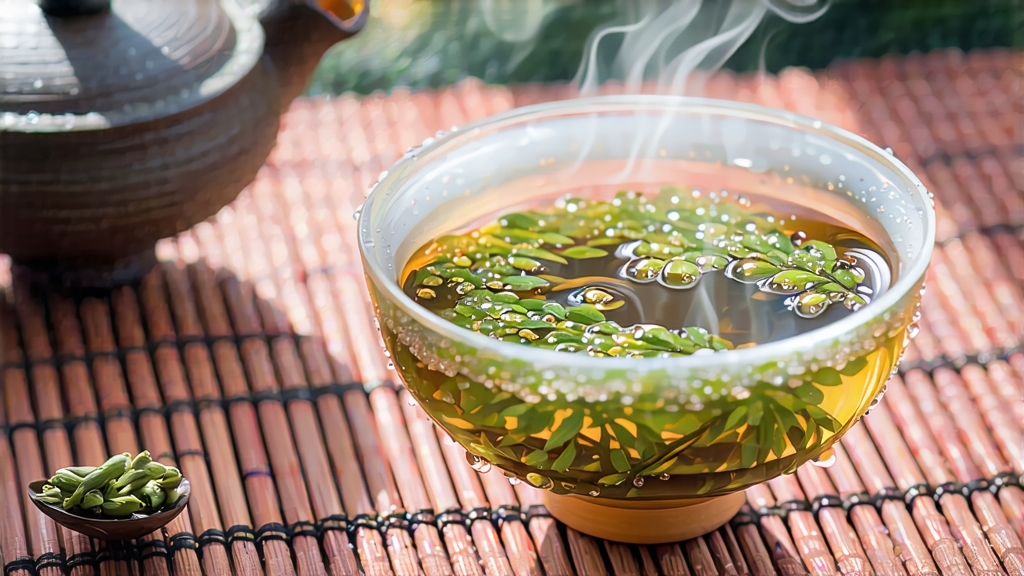
Tucked into the northeastern corner of Fujian province, where the Min River meets the East China Sea, lies the small county of Fuding. For twelve centuries its hills have been wrapped in morning fog so dense that locals say the clouds forget to leave. Out of this mist emerges the most aristocratic of all white teas—Bai Hao Yin Zhen, literally “White Hair Silver Needle.” To international drinkers the name can sound like a line of poetry; to Chinese growers it is simply “the emperor’s eyebrow,” a reference to the slightly curved, silvery shape of the freshly plucked bud.
History: from imperial elixir to modern minimalism
The first verifiable record of Silver Needle appears in the Song-era treatise “Da Guan Cha Lun” (1107 CE), where Emperor Huizong praises a “white downy tea that floats like goose feathers” sent from the Fujian prefecture. Tribute laws of the Ming dynasty codified its harvest: only the unopened bud, picked for three days each early spring when the morning temperature hovered between 14 °C and 18 °C, could be presented at court. Legend claims that palace physicians steeped the buds in jade pots, believing the liquor could clarify the emperor’s eyesight and cool the royal liver.
When British plant hunter Robert Fortune smuggled tea plants out of China in 1851, he ignored white tea entirely; the fashion in London was for smoky black teas that could withstand months at sea. Thus Silver Needle remained a domestic luxury until 1891, when a Fuding merchant named Wu Deji shipped a small cedar chest to San Francisco’s Chinatown. The tea’s visual drama—entirely buds, no leaf—captivated Victorian photographers, and by 1920 it was selling in Paris for twice the price of first-flush Darjeeling.
Terroir: why Fuding’s buds wear silver fur
The cultivars responsible for authentic Silver Needle are Fuding Da Bai Hao and Fuding Da Hao, large-leaf evergreens whose buds can reach 3.5 cm in length. The county’s red-yellow lateritic soil is rich in iron and aluminum, elements that encourage the formation of trichomes—tiny hairs that reflect light and protect the bud from salt-laden maritime winds. During winter the plants enter a deep dormancy; when day-length reaches 11.2 hours the buds swell rapidly, accumulating theanine and caffeine in a ratio that gives Silver Needle its signature umami-sweet balance without grassy astringency.
Harvest calendar: the ticking of spring
Picking begins when the local azalea bursts into magenta bloom, usually between March 15 and April 10. Experienced pluckers use only the thumb and index finger, snapping the bud with a motion that leaves the tiny “fish-tail” leaf base intact. A full kilogram of finished tea demands 30,000 buds, enough to fill two bushel baskets carried on a farmer’s shoulder pole. By noon the buds must reach the withering barn; any delay oxidizes the cut surface, turning the down grey and flattening the aroma.
Craft: the art of doing almost nothing
White tea’s minimalism is deceptive. There are only two official steps—withering and drying—but within those steps lie micro-decisions that separate mediocrity from transcendence.
- Outdoor withering: buds are laid on bamboo trays called “water screens” and placed under 70 % shade cloth. For the first two hours the ambient humidity is kept at 65 % so that moisture evaporates slowly; this prevents the buds from curling and preserves the straight needle shape.
- Indoor withering: trays move into a pine-ceilinged loft where temperature is maintained at 26 °C by nothing more than charcoal pans and the occasional opening of louvered windows. Over the next 30 hours the buds lose 80 % of their weight; enzymes convert lipids into floral volatiles such as linalool and geraniol.
- Solar punctuation: on the second afternoon, if the sun emerges soft and lemon-colored, the trays are carried outside for a ten-minute “light bath.” This brief UV exposure caramelizes surface sugars, adding a whisper of honey to the cup.
- Low-temperature drying: finally the buds enter an electric oven set at 40 °C for 15 minutes—just enough to reduce moisture to 5 %. The goal is to stop oxidation while keeping the trichomes intact; touch a properly dried bud and it feels like stroking a month